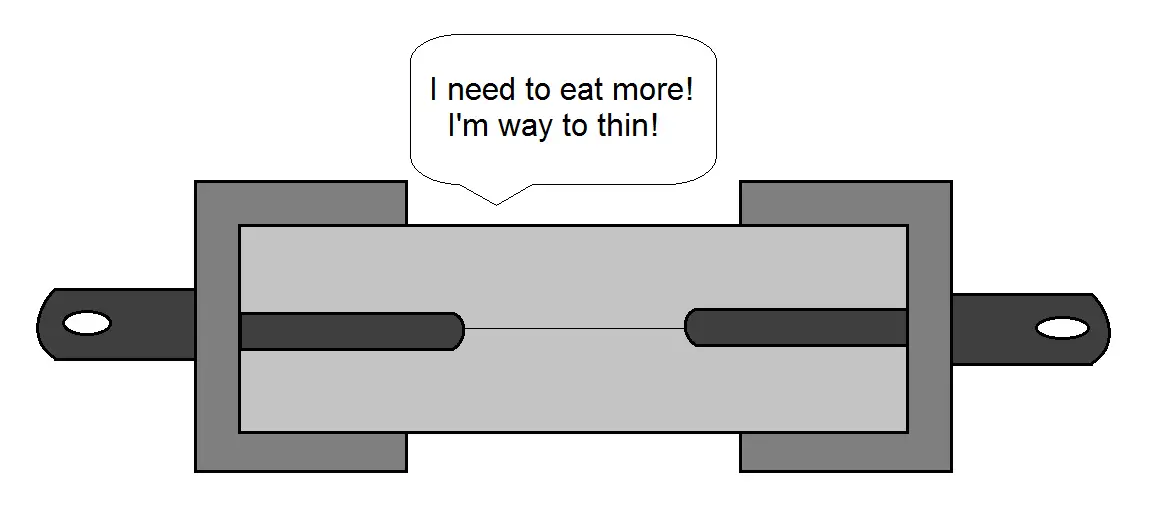Fuses are found in many electrical and electronic applications.
It is a safety device used to protect electrical/electronic components and devices from Overcurrents (current surges) that exceed a certain limit.
Think of it as the last line of defence.
It consists of a metal wire that melts under the heat caused by high currents.
But why is the fuse made of a thin wire? A fuse is made of thin wire as it needs to be able to melt under high temperatures caused by high currents. If it does not melt the overcurrents caused by power surges can damage the circuit.
The thicker the wire, the more current can flow and the harder it is to melt.
The size of wires comes down to their physical characteristics of and their ability to handle different amounts of current.
I will discuss this in more detail in this article.
What is a fuse and fuse wire?
To understand why fuses use thin wire, it will help to learn a bit more about them and how they work.
So, let’s take a closer look at the fuse (if you already know how they work, you can skip this section).
The fuse
In many areas of the engineering world we have fail-safes.
These are safety measures that enable an engineering system to revert back to a safe condition in the event of a malfunction.
A fuse is one of these fail-safes used in electrical and electronic applications.
It is a safety device used to protect components and devices from overcurrent.
Overcurrent is a scenario where excessive unwanted currents are generated in a circuit. It exceeds the nominal currents seen in the circuit.
These large unwanted currents can lead to the generation of high temperatures which have the potential of causing fires.
The fuse wire
But, how does the fuse have the ability to protect a circuit from these overcurrents.
The star of the show here is the Fuse Wire.
This little unsuspecting piece of wire is the ‘thin’ line between safety and catastrophe.
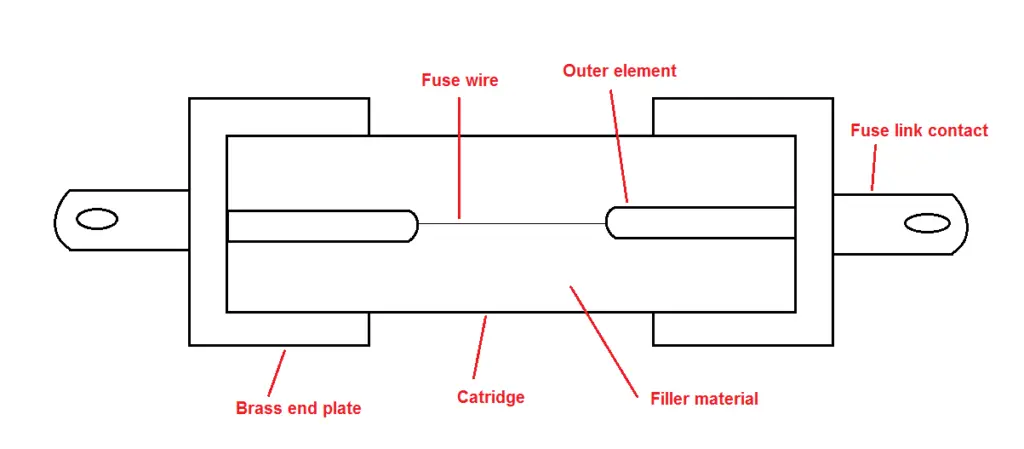
As we saw earlier, high currents generate high temperatures which can lead to fires.
In the scenario of overcurrent, the fuse wire will melt under high heats and break thus opening the circuit and stopping the flow of current.

Fuses have ratings just like any other electronic component which include the maximum voltage and current they can handle before failure.
But, unlike other components, the fuse failing is part of its operation in order to protect other components.
How a fuse works in a circuit
The best way to illustrate how a fuse works is to look at an example. So, let’s take a look at the fuse in action in a simple circuit.

Above is a simple circuit which is designed to power a lamp.
Below are the components of the circuits as well as their voltage and current ratings respectively;
- Battery (12V)
- Lamp (12V, 1A)
- Fuse (12V, 1A).
The lamp requires a voltage of 12V and a current up to 1A to operate efficiently.
So, the maximum current this circuit is going to be subject to is 1A. Exceeding this current value is going to damage the lamp.
Therefore, a fuse with a current rating of 1A (or 1.5A to give a little allowance) is chosen specifically for this purpose.
Any currents above this value will cause the fuse wire to melt.
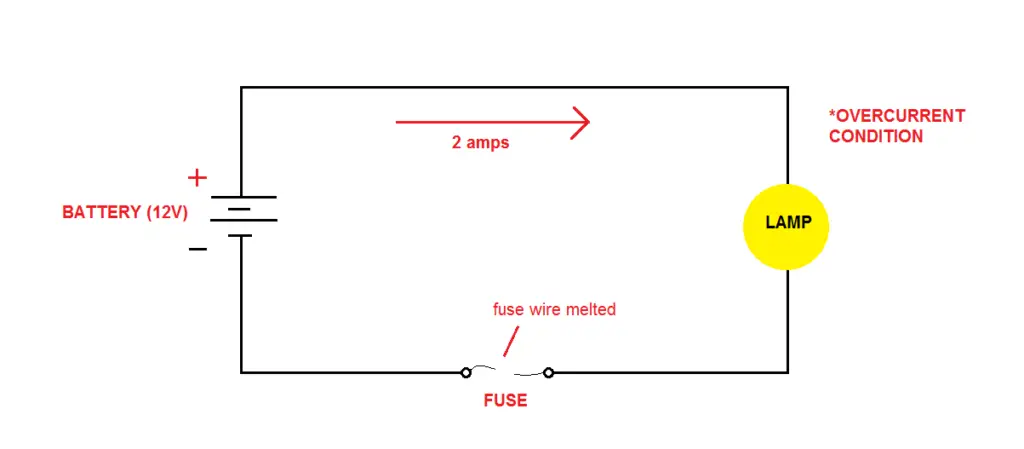
Why is the fuse wire thin?
Alright let’s dive into understanding why a fuse is made of a thin wire.
So, we now know that the main purpose of the fuse wire is to melt under high currents (and therefore high temperatures).
The amount of current that a wire can carry comes down to its physical dimensions, as well as the material it is made of.
Wire Gauge is a measurement that specifies the value of the diameter of a wire.
This value gives us information about the wire such as, the amount of current it can carry, as well as resistance and weight.
The most widely used wire gauge system is the American Wire Gauge (AWG)
Every wire has a limit to the amount of current it can carry and going past this limit is going to damage the wire.
The main reason for a fuse having a thin wire is what happens when the thin wire is subjected to large currents.
Say we have Wire A with a wire gaure of 20.
According to the AWG system, this wire can handle a current up to 3A (so its maximum limit is 3A).
Now, for scenario A, say we supply a current of 2A. Here the electrons (current) can freely move through the wire as the size of the wire is such that it can handle this amount of current.
The key here is that there is no build of friction (or little friction) caused by the electrons bumping into the wire or each other, as there are less of them.
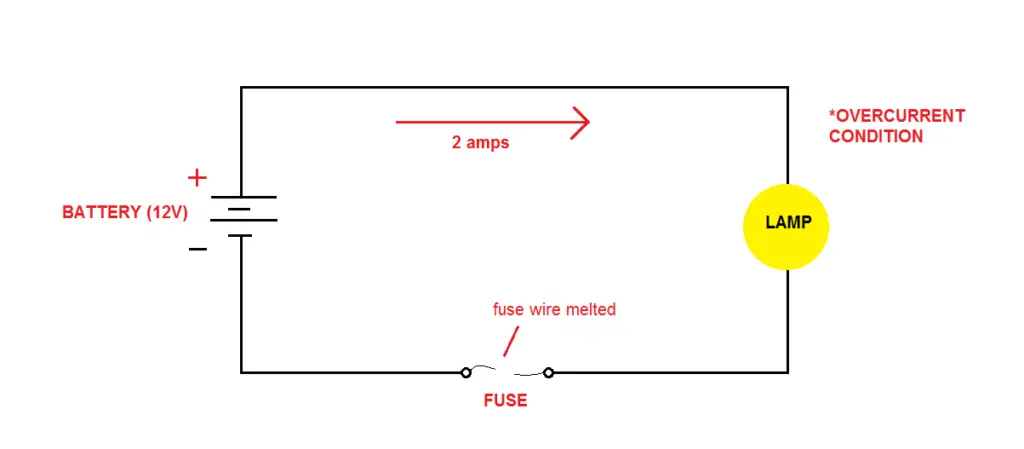
For Scenario B, let’s increase the current past its rated AWG current to say 4A.
Now, the number of electrons has increased but the size of the wire has remained the same. This is going to create a traffic jam of electrons within the wire.
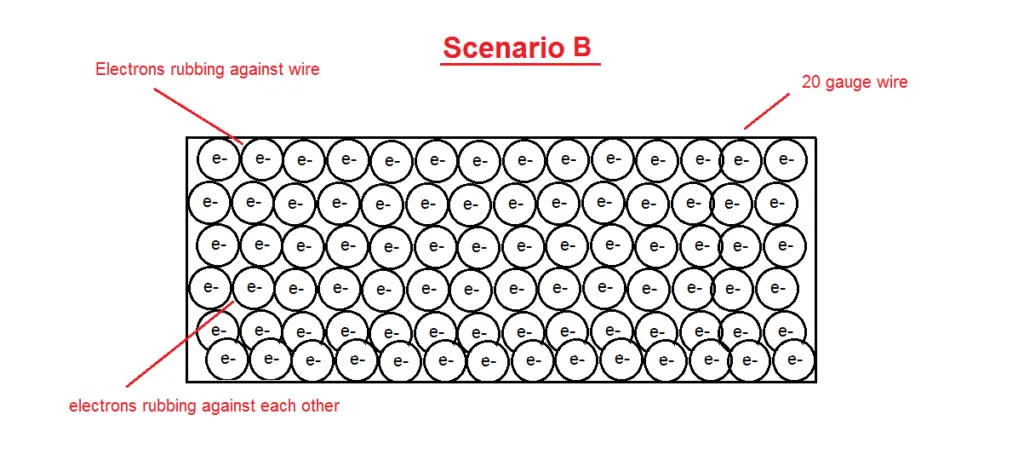
They are going to be bumping and rubbing against each other and the wire.
This is going to cause increased levels of friction and we know that a build of friction is going to cause heat.
The more friction, the more heat which is eventually going to melt the wire.
Having this happen in normal conditions in electrical and electronic circuits is unwanted, however, this is perfect for a fuse as the fuse wire needs to melt when unwanted high currents arise.
This is the exact reason why a fuse is made of thin wire.
What is fuse wire made of?
One of the criterias of selecting a fuse wire is it’s physical dimension as we know now that wires have a limit of the current they can handle.
But, if we choose a material that has a high melting point this is going to defeat the purpose and render the fuse useless as it won’t melt under high temperatures.
Fuse wires are made of an alloy consisting of Sn (tin) and Pb (lead) due to their low melting point.
The composition consists of 62% of tin and 38% of lead.
Their melting point is 183°C ( 361.4°F).
What happens if the fuse wire is thick?
The simple answer is that the circuit and components the fuse is supposed to be protecting are going to get damaged.
If the fuse wire is thick, it is going to be able to handle more current.
For example, if your electrical system is rated at 3A (the maximum current it can handle), but the fuse wire is thick enough to handle 5A and an overcurrent condition occurs of 4A, the components in your electrical system are going to be damaged as the fuse wire will not melt.
The rule of thumb is to choose a fuse wire rated at 1.1 – 1.5 times the maximum current value of the system.

